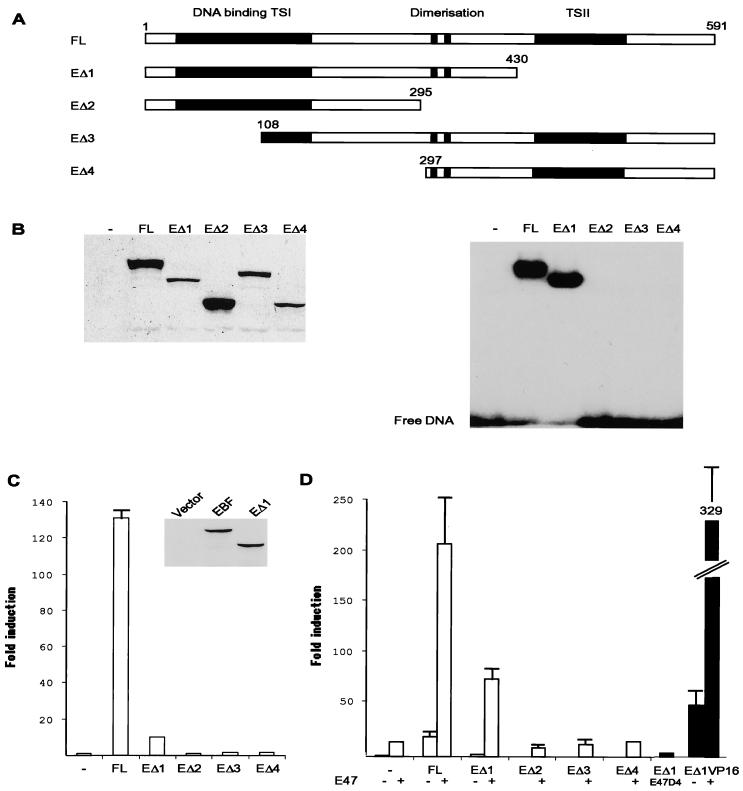FIG. 4.
The carboxy-terminal transactivation domain of EBF is important for full functional activity, but DNA binding and dimerization domains are sufficient to mediate synergy with E47. Panel A shows a schematic drawing of the full-length and truncated EBF proteins that were fused to an amino-terminal 9E10 myc tag. Functional domains in EBF are indicated by black boxes and represent the DNA binding, dimerization, and transactivation domains TSI and TSII as indicated. The numbers indicate the amino acid positions for the introduced truncations. The figure is not drawn to scale. (B) The left panel shows Western blot analysis with 9E10 anti-myc antibody and 10-μg nuclear extracts from HeLa cells transiently transfected with 800 ng of the indicated EBF protein. The right panel shows an autoradiogram from EMSA using 5-μg nuclear extracts from transiently transfected HeLa cells and an end-labeled oligonucleotide encompassing the mb-1 promoter EBF binding site as indicated. (C) Diagram indicating the relative luciferase activity obtained after transient transfections of 200 ng of the λ5 reporter plasmid with 800 ng of EBF encoding expression plasmids as indicated. The reporter activity obtained with 800 ng of empty expression plasmid was set as 1, and data were calculated from three representative transfections. Error bars indicate standard deviations. The radiogram presents a Western blot using 9E10 antibody and the same protein extract as used for the luciferase assays. (D) Diagram representing the relative luciferase activity obtained when 200 ng of the λ5 reporter plasmid was transfected with 150 ng of EBF-encoding plasmids in combination with 50 ng of empty (−) or 9E10-tagged E47-encoding (+) expression plasmid in HeLa cells. The black bars indicate that these data were collected from an independent transfection experiment. The reporter activity obtained with 200 ng of empty expression plasmid was set as 1, and data are collected from three representative transfections. Error bars indicate standard deviations.

